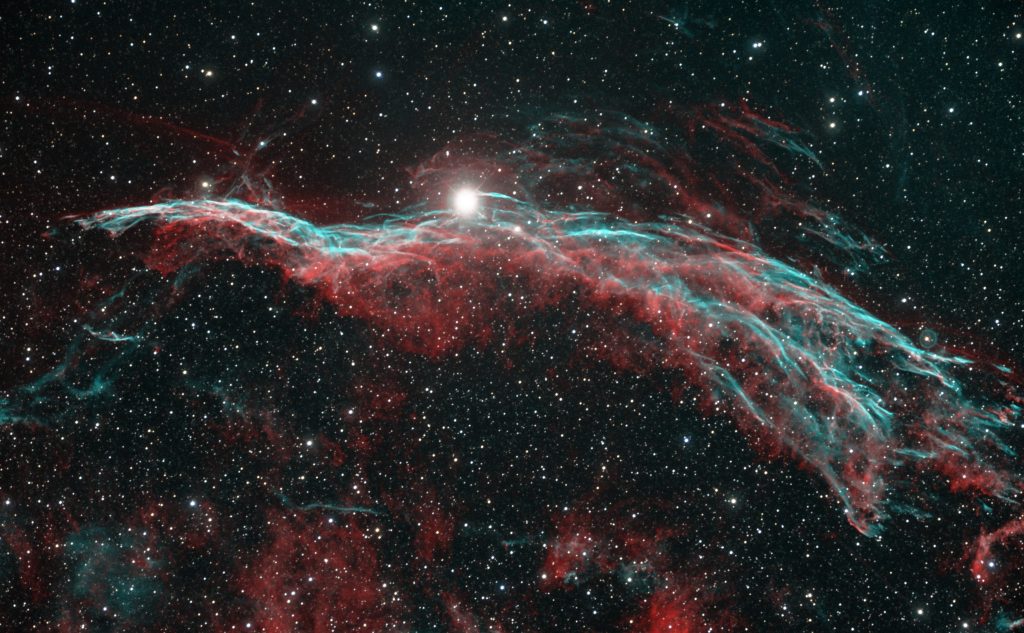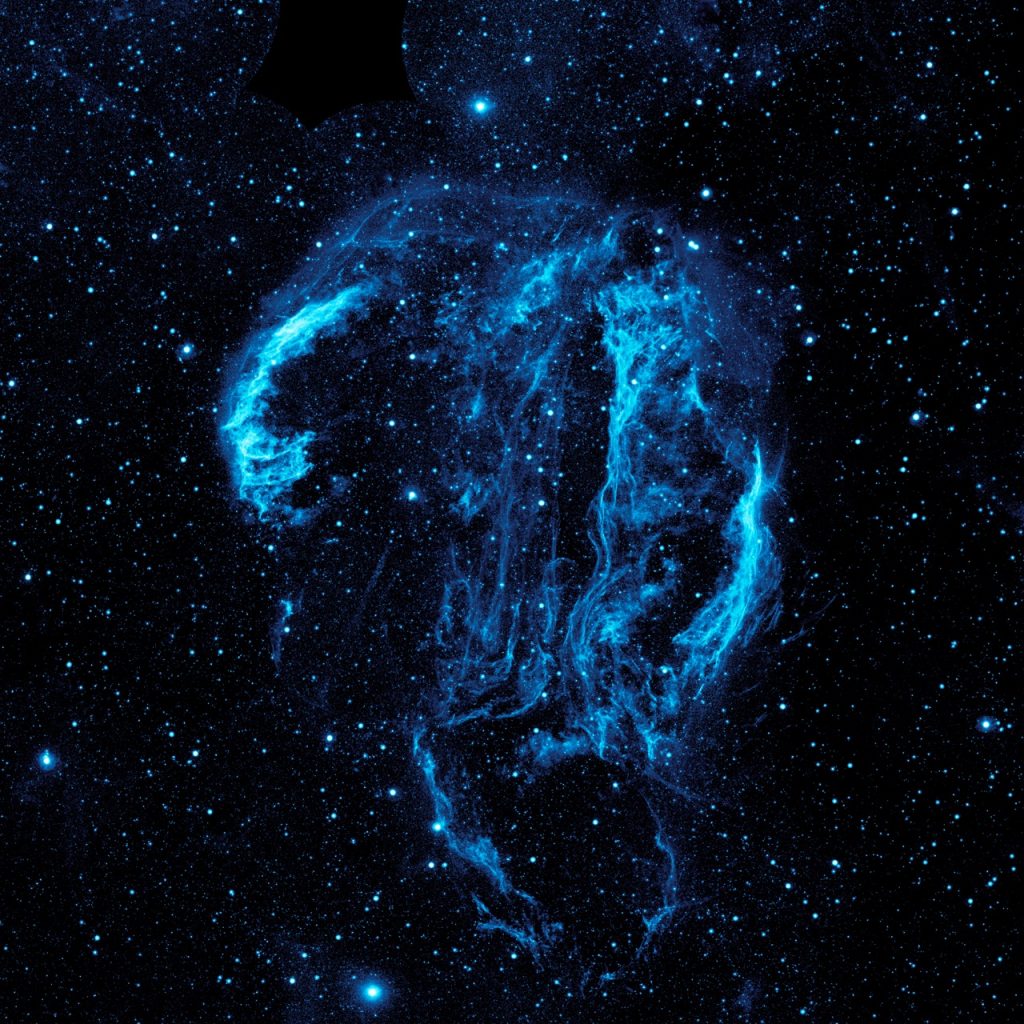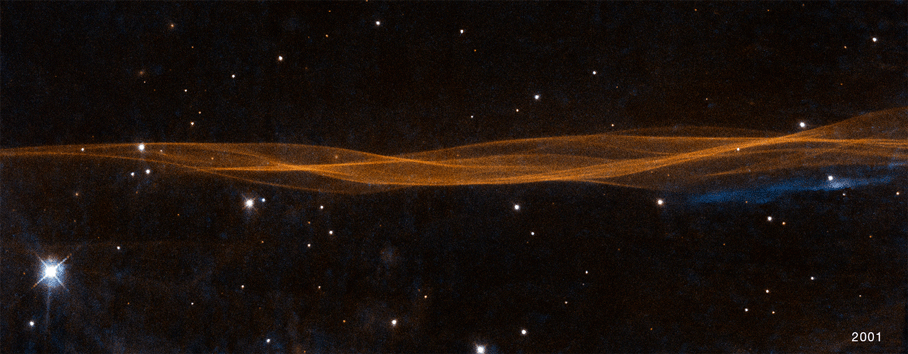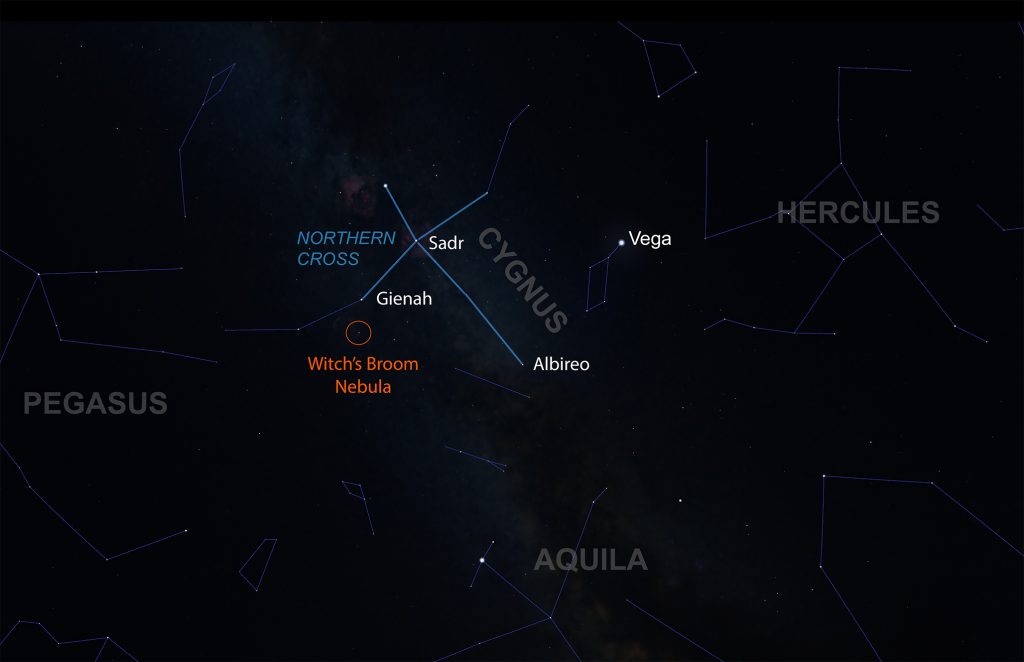
With leaves beginning to change to warmer hues and a crisp chill in the air, it’s not difficult to tell we are nearing the end of October. Another dead giveaway (pun intended) are all of the ghouls, jack-o-lanterns, and skeletons adorning yards and front porches. Halloween is fast approaching, and it seems the universe has also gotten into the spirit on a cosmic scale as another hallmark of All Hallows’ Eve glides silently overhead.
The Witch’s Broom Nebula consists of shells of gas expelled by a supernova that detonated an estimated 20,000 years ago. Discovered by William Herschel in September 1784, the nebula is actually part of a much larger structure known as the Veil Nebula or the Cygnus Loop. The more formal designation of the Witch’s Broom is NGC 6960, but with it being the western-most portion of the cloud, it is often referred to as the Western Veil Nebula. Over time, though, it has gained the more whimsical moniker of the Witch’s Broom Nebula due to its distinctive shape. The Cygnus Loop has a number of other distinct areas that are observable in visible light and given their own designations including the Eastern Veil Nebula and Fleming’s Triangular Wisp. Observations in other types of light, such as radio and ultraviolet, reveal additional features of the nebula that would have otherwise remained hidden.

Most core-collapse supernovae (those that occur when massive stars die) leave behind a dense, compact stellar corpse known as a neutron star. Only about the size of a small city, these giant balls of neutrons can be as massive as 2-3 Suns. Despite repeated efforts over the years, a neutron star has not been found with the Cygnus Loop. The shockwave continues to move through our galaxy at speeds on the order of half a million miles per hour. As the wave slams into tenuous gas in space (the interstellar medium), it heats the gas and causes it to fluoresce. In the featured image, red light is emitted by hydrogen atoms while the teal color is given off by oxygen atoms.

The nebula lies about 2,400 light-years away in the constellation Cygnus, the swan, appearing just south of the star Gienah in the swan’s famous asterism of the Northern Cross. The entire Cygnus Loop spans nearly three degrees on the sky (six times the width of the full Moon), which corresponds to a diameter of about 120 light-years. The very bright star appearing on the edge of the Witch’s Broom is the fourth magnitude star 52 Cygni, which is bright enough to be observed with the naked eye in decently dark skies. Though it appears to ride along the Witch’s Broom Nebula, 52 Cygni is only about 200 light-years away and is thus not associated with the nebula; however, it can serve as a perfect guidepost if hunting the nebula with a telescope or camera. The nebula is bright enough that even shorter exposures in dark skies begin to reveal its presence.

The featured image is comprised of numerous five-minute exposures that have been digitally added together for a total exposure of nearly 22 hours. About half of the exposures were taken with a monochrome camera equipped with narrowband filters, one for hydrogen and one for oxygen. Each filter only transmits an extremely narrow sliver of the full rainbow of color – the color emitted by either hydrogen or oxygen. This was especially useful given that the images were acquired from the fairly light-polluted sky of Dyer Observatory. The narrowband filters block much of the light pollution from reaching the camera while still allowing the light of the nebula to pass unhindered. Post-processing also allowed for further enhancement of the nebula against the background to really make it stand out against the sea of stars of the Milky Way.
So we have the Witch’s Broom, but where is the witch? This time of year she doesn’t rise until most trick-or-treaters have made it back home with their night’s hauls. The Witch Head Nebula (IC 2118) appears next to the bright star Rigel in Orion but is technically part of the adjacent river constellation Eridanus. The witch is also much fainter and spans an area much larger than her broom, making her practically invisible in a typical backyard telescope. Perhaps she cast a spell to keep herself cloaked from prying eyes of nosy stargazers.